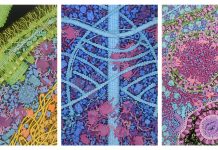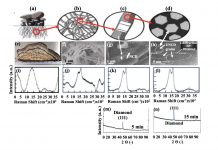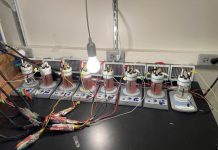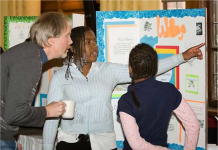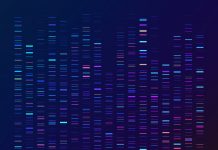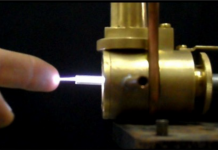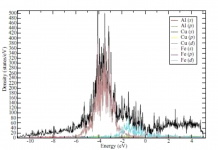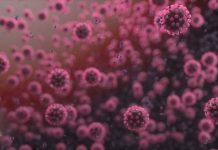Open Access Government produces compelling and informative news, publications, eBooks, and academic research articles for the public and private sector looking at health, diseases & conditions, workplace, research & innovation, digital transformation, government policy, environment, agriculture, energy, transport and more.
Home 2023
Archives
Computational biology is poised to advance precision medicine with machine learning
Today, scientists are attempting to model whole cells using computational biology, building virtual cells that capture the dynamics of living.
CO2 bioeconomy: Creating value from carbon dioxide
Is the CO2 bioeconomy creating value from carbon dioxide? Dr Kang Lan Tee and Professor Tuck Seng Wong both explain.
The rotating lepton model: Electron and positron catalysis of chemical and nuclear synthesis
Professor Emeritus Constantinos Vayenas from the University of Patras and PhD student Dionysios Tsousis from Stanford University discuss electron and positron catalysis in the CERN e+e- annihilation experiments via the Rotating Lepton Model.
Early detection of algal infection using direct real-time chemical ionization mass spectrometry
Robert S. Pomeroy, Teaching Professor at UC San Diego, guides us through the early detection of algal infections using direct real-time chemical ionization mass spectrometry.
Decarbonising the world economy with synthetic biology
Macquarie University Distinguished Professor Ian Paulsen, discusses how synthetic biology can be used to decarbonise the global economy.
Pioneering biomass transformation to unique multifunctional/ biocompatible ultrananocrystalline diamond (UNCDTM)
O. Auciello's group atThe University of Texas-Dallas is developing a new revolutionary low-cost microwave plasma pyrolysis process, implemented in a kitchen microwave oven, for biomass transformation.
Fostering self-regulated learners through child-centred evaluation activities
Emiko Izumi, PhD from Kwansei Gakuin University, discusses child-centred evaluation activities, including enhancing thinking, judgment and expression skills.
Innovative dynamic molding to reduce development costs of personalized medicine
3Deus Dynamics has raised €2.5 million for the industrialization of its 3D process, to expand internationally and revolutionize personalized medicine with Dynamic Molding.
Industrial organization: understanding the mechanisms of market structures
Patrick Legros, Professor of Econonmics at Université libre de Bruxelles, explores how Industrial Organization can help understand the positive and normative consequences of different...
How to convert CO2 to bioplastics in the age of global warming
Arpita Bose, PhD, Associate Professor, describes how to convert CO2 to bioplastics through new bugs and novel tools with a focus on fighting global warming.
CorTec’s Brain Interchange™ system: Revolutionizing brain therapy with closed-loop neuromodulation
CorTec’s Brain Interchange™ system offers closed-loop neuromodulation, revolutionizing brain therapy by precisely adapting treatment based on individual needs.
The fair principles: Trusting in fair data repositories
Andy Götz, ESRF data manager and PaNOSC coordinator, discusses the impact of applying the FAIR principles to research data.
Towards One Health Intelligence surveillance systems
The increase in global diseases and other health threats in recent decades has necessitated the importance of strengthening our surveillance systems towards early detection and monitoring of drivers.
Inspiring STEM education focused on solutions
Nancy Butler Songer, from the University of Utah, makes a call for collective action to create a new curriculum focused on the design of solutions.
AARS urzymes: Experimental biochemistry to map genetic coding
Dr Charlie Carter from the University of North Carolina at Chapel Hill explores how advances in enzymology and phylogenetics enable biochemical measurements that could map the ancestral development of genetic coding.
Future technology: Multi-purpose plasmas with microwaves
Professor Michel Moisan and his team at Université de Montréal (UdeM) explore reliable, energy-efficient and multi-purpose plasmas with microwaves for research and technology.
Emergent dimensionality: Exploring all possible (and unobservable) extra dimensions
Dr Szymon Łukaszyk, Łukaszyk Patent Attorneys, explains emergent dimensionality, exotic R4, ‘life as the explanation of the measurement problem’, and personal motivations.
Uncovering the potential for geoscience research in Canada’s North
David Mate, Executive Director of the Northern Canada Division, Geological Survey of Canada, shares how the GEM-GeoNorth program is using geoscience research to improve the quality of life for Canadians.
The spikiness of the density of states in quasicrystals
The spikiness of the electronic density of states in quasicrystals is believed to be inherent to QCs and so-called approximants (APs) to QCs.
The potential of microparticles for active surveillance of infectious diseases
Emmanuel Kifaro from the SACIDS Foundation for One Health, and College of Veterinary Medicine and Biomedical Sciences, Sokoine University of Agriculture, Tanzania, details the potential application of microparticles for active surveillance of viral infections from non-invasive animal matrices.

